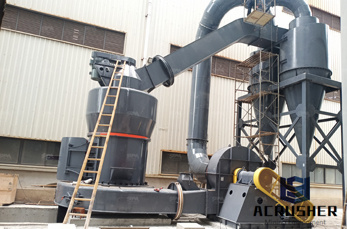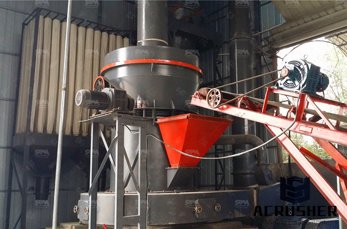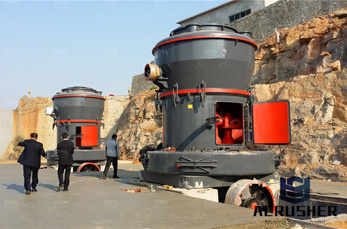Dissolution and precipitation of _______ are the main ...
Nov 17, 2017· Dissolution and precipitation of _______ are the main processes that form limestone caves.
 WhatsApp)
WhatsApp)
Nov 17, 2017· Dissolution and precipitation of _______ are the main processes that form limestone caves.

When pH value was greater than or equal to, due to the formation of calcium citrate, citric acid would inhibit the dissolution process of limestone. And the inhibition effect was more obvious ...

In this study is reported an interdisciplinary approach to teaching chemistry using case studies seeking to stimulate the students in the learning process as well as to develop their critical thinking. The focuses were in chemical multiple equilibrium from an environmental problem based on the quantitative assessment of the dissolution process of limestone sediment containing in a water body ...

Jul 17, 2009· Carbonate precipitation by bacteria is a complex process which was described by Castanier et al. as involving metabolic pathways associated with photosynthesis, nitrogen and sulfur cycles, and ion exchange (Ca 2+ /H +) . Barabesi et al. and Perito et al. identified six genes involved in crystal formation in Bacillus subtilis PB19.

GarciaRios et al. (2015) Influence of the flow rate on dissolution and precipitation features during percolation of CO 2rich sulfate solutions through fractured limestone .

Precipitation and dissolution processes, mediated by the flow rate, can significantly modify the physical and chemical properties of porous media.

Diagenesis (/ ˌ d aɪ ə ˈ dʒ ɛ n ɪ s ɪ s /) is the process that describes physical and chemical changes in sediments caused by increasing temperature and pressure as they get buried in the Earth''s crust. In the early stages, this transformation of sediment into sedimentary rock (lithification) is accompanied simply by a reduction in porosity, while its component mineralogy remains ...

Feb 03, 2016· The injection of lowsalinity brines can improve oil recovery in carbonate reservoirs by changing the rock wettability from being more oilwet to being more waterwet. Existing models use an empirical dependence of wettability based on variables including equivalent salinity and ionic strength. We recently developed a processbased model that mechanistically includes the geochemical ...

Deterioration of stone works: causative agents. The deterioration of historic monuments and stone works occurs due to numerous factors leading to stone dissolution, staining or color alteration, surface alterations, biocorrosion and transformations into smaller sized crystals etc. (Chand and Cameotra, 2011).In the last decades, alterations have occurred mainly due to microbial biofilm ...

Advanced Treatment of Chemical Equilibria in the Prediction of the Time of Dissolution of Limestone in a Water Body by the Action of Acid Rain. World Journal of Chemical Education. 2018; 6(6):230238. doi: /wjce661.

1] A model is presented for the compaction of granular aggregates that accommodates the serial processes of graincontact dissolution, grainboundary diffusion, and precipitation at the pore wall.

Modelling of dissolution and precipitation during microbially induced calcium carbonate cementation process using Lattice Boltzmann method Poster · April 2018 with 15 Reads How we measure ''reads''

Precipitation and dissolution reactions in porous media dominate and control a large number of geochemical processes and industrial applications. The precipitation and dissolution of minerals from aqueous solutions alters the pore space and its connectivity. This has a strong effect on the mass convection and diffusion through the porous medium.

Experimentally, it has been found that Ca2+ and SO42– are key ions in the Smart Water wettability alteration process in limestone and that lowsalinity (LS) enhanced oil recovery (EOR) effects in limestone can be observed if the formation minerals also include dissolvable anhydrite, CaSO4. A diluted brine, such as a standard LS brine, contains low amounts of Ca2+ and SO42–, which prevent ...

Having examined the processes which can form limestone caves, we are now ready to formulate a model which is consistent with the geologic data and in harmony with a Biblical framework for earth history. 20. Step 1 Deposition and burial of limestone. The first step for the formation of a cave is obviously to deposit the limestone.

In such a scenario, the process of mixing waters enhances the exclusive dissolution of limestones, preventing the precipitation of calcite within the aquifer and favouring the increase of SIcc values downstream of the springs. Such conditions were recorded during periods of high water level of the aquifers and during floods.

Oct 27, 2017· Such a replacement reaction can be described as a process of coupled dissolution precipitation 35 during which the impurity rich dolomite is locally dissolved and .

May 08, 2009· Climatic changes and the increased air pollution intensify the atmospheric degradation of stone, affecting the aspect and integrity of valuable historical buildings constructed using limestone and located in tropical coastal sites. This paper analyzes limestone degradation process due to air pollution and humidity in tropical humid conditions in historical buildings located in the cities of ...

''The number had declined to 3,466 farmer cooperatives by 1999 due to dissolutions, mergers, consolidations and acquisitions.'' ... ''It is postulated that the lowered pH microenvironment in the guts of organisms may accelerate mineral dissolution and precipitation processes during ingestion.'' ... ''Biovermiculation is limestone erosion ...

The present work investigates the influence of crack opening rates on the development of four important calcite vein morphologies, namely fibrous, elongateblocky, partially open, and euhedral, as a result of bitaxial growth in syntaxial veins using a multiphasefield model. The continued fracturing that occurs during synkinematic cementation in these veins is simulated using the geometric ...

Apr 25, 2017· 1. Dissolution and precipitation of _______ are the main processes that form limestone caves. A. calcite

Dissolution and precipitation of _____ are the main processes that form limestone caves. A. clay B. sandstone C. calcite D. salt water Dissolution and precipitation of calcite are the main processes that form limestone caves.

Dissolution and precipitation of _____ are the main processes that form limestone caves. Dissolution and precipitation of calcite are the main processes that form limestone caves. s

A mathematical and numerical methodology for solving the inverse problem of water flow, heat transport, and multicomponent reactive solute transport in variably saturated media was developed by Dai and Samper (1999a), verified by Dai (2000), and used successfully by Dai and Samper (1999b, 2004), Samper et al. (1999), Huertas et al. (2000), and GarcíaGutiérrez et al. (2001).
 WhatsApp)
WhatsApp)